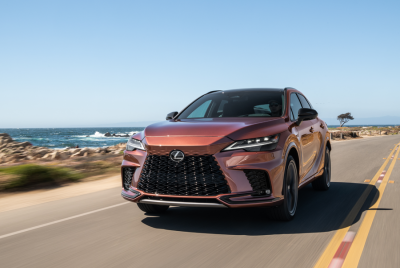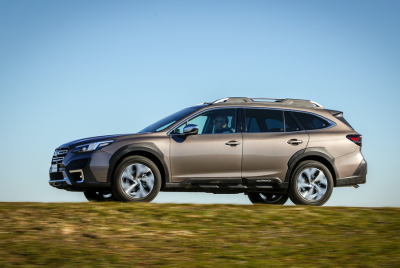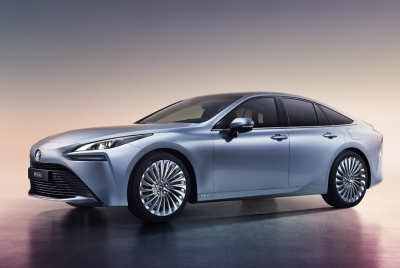Longer and wider than its previous version, in spite of its minimalist name, the new Micra is also lower and boasts a longer wheelbase. The fifth generation of the famous Micra descends from the one that first introduced to the general European public the city car concept according to Nissan. Since its launch thirty-seven years ago, its widespread popularity on the world markets meant sales in the region of over seven million units, half of which in Europe alone. Not just a small car, then, but one of the most appreciated protagonists in the hard-fought B segment and the first Japanese car to win the title of European Car of the Year in 1993.

Bold styling connecting bonnet and tailgate, signature floating roof with top spoiler, sporty looks and 17-inch wheels give the fifth generation Micra an audacious and dynamic style

A stylish dashboard topped by a 7-inch multi-function central display which controls all functions including automatic climate control and NissanConnect interface for online functions

-

The only engine offered at the moment, the 3-cylinder 999 cc turbocharged petrol, offers 101 and 117 hp, depending on the version, just enough to get away from urban traffic as well as to sprint on motorways towards holiday destinations

-
Bridgehead
It was 1983 when, the interest and curiosity of an audience that up until then had been accustomed to mostly national or continental brands, was suddenly captured by Nissan’s Micra, an exotic novelty with an Italian flavour thanks to a stylistic collaboration with Italdesign and the creative genius of Giorgetto Giugiaro. An immediate and unequivocal success decreed by a second generation of the little city car, in 1992, with its unmistakable manga-like rounded looks that aroused immediate sympathy in the public. Soft lines that were proposed also in the third and fourth edition, until the current fifth, presented in 2016 and characterized by a more gritty and modern style, almost a coupe, despite the 5 doors.
From the original compact dimensions, and therefore able to get away from the congested traffic in large cities, the Japanese manufacturer moved progressively on to larger volumes, family size.
Perhaps the Japanese are not as short as we have always thought. Or rather, although the average height of the Asian population has grown, the new Micra design, as a true global vehicle, develops vertically with lowered front seats, offering an additional sense of sportiness as well as sufficient room for, Nordic passengers, for example.
Originally a three-door design, the current generation offers a single five-door option with black rear access handles integrated in the uprights.
Just one millimetre short of 4 metres, the new Micra is 1.74 metres wide and 1.45 metres high, with a wheelbase increased to 2.52 metres, which means reduced overhangs and greater room for the passengers thanks to an interior length of 2.82 metres and a width of 1.32 metres.
In addition to the five seats, the interior space includes a 300-litre luggage compartment, expandable to 1,004 litres, without the spare wheel, which can be obtained on request instead of the repair kit.
Following the dimensional evolution, comfort and safety are equally guaranteed by several hi-tech devices, without neglecting a wide range of aesthetic features and different trim levels, with sophisticated elements such as full LED light clusters, the powerful Bose audio system with speakers integrated in the headrests, the exclusive NissanConnect infotainment system with 7-inch central display (which equips also the Nissan Qashqai), automatic air conditioning, keyless access and start, digital radio and satellite navigation. No shortage of Adas devices either, with emergency braking system, pedestrian recognition, high beam control, lane departure warning and road sign recognition, all included in the Safety Pack as standard or optional depending on the version.
Downsizing Japanese style
Although since its debut four years ago, and in the years that followed, the latest Micra has been offered with different engines, diesel, petrol, also bi-fuel with LPG, the latest update provides for a single engine option, developed in synergy with Renault, the French group with which Nissan has a consolidated partnership. The choice fell on a 1-litre 3-cylinder turbocharged petrol engine, with a maximum power output of 101bhp, flanked by a sportier version capable of delivering 117bhp, which represents the top of the range.
The first unit belongs to the IG-T series, unit found also on the Renault Clio, purged from the 71 hp aspirated version – just like the Diesel 1.4 Dci and the smaller 900 cc 3-cylinder - and now consolidated in a single 101 hp turbo configuration, just enough to guarantee the right zest keeping operating costs under control at the same time.
This is an all-aluminium Otto cycle, 999 cc in-line 3-cylinder, 4-valve distribution and variable timing. Supercharging is provided by a low-inertia turbocharger able to deliver the power needed right from the start. The maximum power is 101hp with a torque of 16.3kgm delivered at 2,750 rpm, enough to push the Micra from 0-100 km/h in 10.9" and reach a top speed of 184 km/h.
At the top of the range, we find the DIG-T unit, still a 1 litre 3 cylinder in-line engine. Not simply an electronically enhanced version but a completely revised engine with electronic injection, an electronically controlled west-gate valve, so as to squeeze 117 HP (not bad considering the displacement) and 18.4kgm of torque at 1,750 rpm, for a top speed of 195 km/h and acceleration 0-100 under 10".
The 117hp available only on the N-Sport version is controlled by a 5-speed manual gearbox which offers a compromise between verve and elasticity, allowing for both a relaxed ride, even during long stretches, and an easy and fun ride taking advantage of the dynamic qualities offered by the Micra. The little Japanese city car benefits also from lower suspensions, carbon look customised graphics and 17" alloy wheels.
A little less sporty, but more relaxing to drive, the Xtronic automatic transmission with Cvt variator features a gear shift simulation system that speeds up gear changes, a D-Step system which ensures a power output that is not found in a traditional CVT, with fast gear changes and reduced fuel consumption, an L position to simulate a shortened gear ratio (useful on steep slopes, for example).
A classic mixed suspension scheme, independent at the front with a torsion beam at the rear, provides a balanced compromise between grip and comfort, with a more rigid setting reserved for the vivacious 117hp model. Likewise, the braking system is also mixed, with front discs and drum at the rear, sufficient to guarantee adequate stopping distances considering the overall mass of just over 1 ton. Three options for the wheels with 15-inch rims and tires for the entry level, 16-inch for the middle and high level, and 17-inch wheels on the sportier version.










